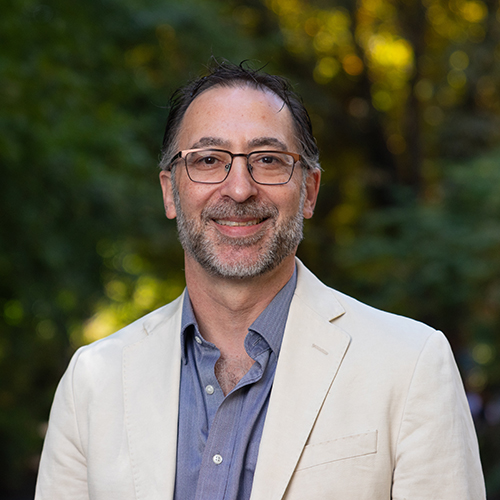She could easily have missed it. A gemstone, less than a half-inch long, buried in the dirt. She might have mistaken it for just another pebble. But Megan Webb realized this was something different.

Webb was participating in the UW’s Archaeological Excavations and Field School at Tel Dor, Israel when she spotted a stone that would later be identified as a carnelian stone, likely once part of a signet ring dating back to about 230 BCE. On the stone is an engraved portrait of Alexander the Great. The find has been the subject of news stories worldwide.
“There are only about 20 to 30 of these gemstones in the world,” says Sarah Stroup, associate professor of classics, who founded and leads the UW field school. “It’s an incredibly rare find. The fact that a student made the discovery makes it all the more satisfying.”
What makes this particular gemstone noteworthy is that it was found in context in a controlled excavation, according to classical archaeology professor Jessica Nitschke of Georgetown University, who first identified the portrait as Alexander. Nitschke explains that most Alexander gemstones in museums were found before the advent of modern archaeology or obtained through illicit antiquities trade, therefore lacking detailed history. Also of interest is the gemstone's location in Israel, suggesting that local elites in cities far from the center of the Hellenistic world could afford and appreciate first class objects of small art.
Tel Dor, where the gemstone was unearthed, is the site of ancient Dor, a coastal city with occupation levels stretching from Canaanite to Roman. The UW team's focus has been a 12 x 12 meter area of the site, investigating the architectural remains of the large Roman, Hellenistic, and Persian industrial and domestic complexes.
Stroup began taking a handful of students for summer excavations at Tel Dor in 2003. In 2007 the Department of Classics made the field school an official program, with 20 to 30 students participating annually. Most are UW undergraduates and graduate students, but up to 30 percent come from other institutions in the U.S. and abroad—including Webb, a ceramics major from Philadelphia University. Although participants pay tuition, support from donors is essential to cover expenses.

Unlike many field schools, which restrict the actual excavation to local professors and staff, the UW program is hands-on, involving students in every aspect of archaeology, from setting up the tents at the beginning of the season, to learning proper use of tools, to recording and analyzing artifacts. “No other field school offers students such a thorough introduction to all aspects of archaeology,” says Stroup. Working side-by-side with researchers from Israel and other countries, students also forge international friendships and learn about other cultures.
Beyond their hands-on work at the site, students attend late afternoon lectures four days a week, presented by a wide variety of local and visiting scholars. They also keep daily “excavation journals,” take weekly quizzes, and prepare two final reports, one on artifact analysis and the other an end-of-season report. For their efforts, students earn 12 academic credits.
“It’s a very rigorous school,” says Stroup. “The goal is to move them beyond the role of student into the role of archaeologist. We train them and then trust them to know what to look for and make educated decisions.”
Webb is proof that the training pays off. When she arrived at Tel Dor, she had no archaeology experience. But through her field school training, she knew what to look for when it counted.

Although Webb’s find was this season’s big news, it was by no means the only exciting discovery. The archaeology team also found inscriptions and ostraka—graffiti written on broken potsherds—from the Greek and Roman periods, silver and bronze coins, lead curse tablets, bronze arrowheads and pins, bronze surgical instruments, and an Egyptian molded amulet of the Greco-Egyptian deity Harpocrates.
“That amulet was my favorite find,” says Stroup, although she admits that the Alexander gemstone may have usurped the top spot. “The gemstone is rarer and more important historically,” she explains, “and I love that it’s bringing attention to the UW Field School, a wonderful program that could use more support.”
As for Webb, she’s excited by the sudden attention her discovery has garnered.
“When I joined the UW team, my goal was to gain some archaeology experience and put my ceramic background to use,” she says. “I had no idea I would be a part of such an incredible and rare find.”
For more information about the UW Tel Dor Field School, including additional photos and opportunities to get involved, visit the website at http://depts.washington.edu/teldor.
More Stories

Need a break from holiday movies? Try these
For those wanting a break from holiday movies, Cinema & Media Studies faculty and grad students offer suggestions.

The Public Impact of Private Cities
Geography major Edwin Bai has researched private cities, developed by individuals and corporations, that "take the libertarian idea of low government regulation to the maximum."

The Curious Journey of Chinese Characters
Several Asian countries adapted the Chinese writing system—the oldest writing system still in use—for their own languages. In a new book, Professor Zev Handel shares how that happened.